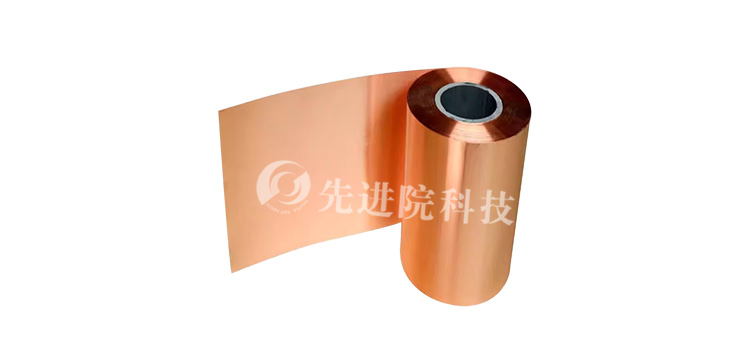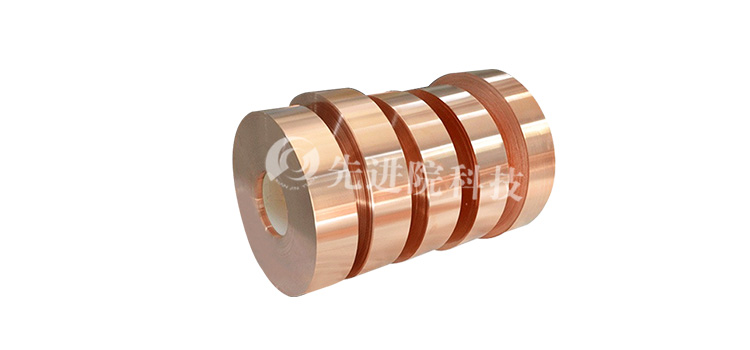

Hotline:0755-22277778
Tel:0755-22277778
Mobile:13826586185(Mr.Duan)
Fax:0755-22277776
E-mail:duanlian@xianjinyuan.cn
Overview of the Development of Copper Foil Industry
Electrolytic copper foilThe development of copper foil industry can be divided into three stages: the establishment of American copper foil enterprises, which marked the beginning of the world's electrolytic copper foil industry (1955-mid-1970s); The stage of rapid development of Japanese copper foil enterprises and comprehensive monopoly of the world market (1974-early 1990s); The stage of multipolar competition for the copper foil market among Japanese, American, Asian and other copper foil enterprises (from the mid-1990s to the present)
The copper foil industry was first produced in 1937 by Anaconda Company's copper refinery in New Jersey, USA
In 1955, Yates Company in the United States began specializing in the production of copper foil for PCBs
Copper foil industry standard
The authoritative standards in the world are:
American ANSI/IPC standards, European IEC standards, Japanese JIS standards
IPC-CF-150(1966.8) IPC-MF-150G(1999)
IEC-249-3A(1976)
JIS-C-6511(1992)JIS-C-6512 (1992)JIS-C-6513(1996)
GB/T-5230(1995)

In March 2000, the Institute of Electronic Circuit Interconnection and Packaging (IPC) released“Metal foil for printed boards”(IPC-4562). The IPC-4562 standard is a globally authoritative standard that comprehensively regulates the variety, grade, and performance of copper foil. It is progressiveness in the world. It replaces the IPC-MF-150G standard implemented by most of the original copper foil manufacturers in the world.
Classification of Copper Foil
According to different methods of making copper foil,
It can be divided into two categories: rolled copper foil and electrolytic copper foil.
IPC-4562 specifies the types and codes of metal foils based on their manufacturing processes
E - Electrolytic foil
W - Rolled foil
Electrodeposited copper foil (ED copper foil)
Copper foil made by electrodeposition
Rolled Copper Foilrolled copper foil
Copper foil made by rolling method, also known as forged copper foil
Classification of Copper Foil
There are the following types of electrolytic copper foil:
Double treated copper foil
In addition to treating the rough surface of electrolytic copper foil, the smooth surface is also treated to roughen it.
High temperature elongation electrodeposited copper foil
(abbreviated as HTE copper foil)
Copper foil with excellent elongation at high temperatures (180 ℃), among which copper foils with thicknesses of 35 μ m and 70 μ m should maintain an elongation at high temperatures (180 ℃) of at least 30% of their elongation at room temperature, also known as HD copper foil.
Low profile copper foil (LP)
The microcrystals of the original copper foil are generally very rough, appearing as coarse columnar crystals. The cross-sectional lines of its slices have significant undulations. The crystallization of low profile copper foil is very delicate (below 2 μ m), with equiaxed grains and no columnar crystals, presenting as layered crystals with flat edges.
Resin coated copper foil (RCC)
Also known as resin coated copper foil domestically. Taiwan refers to it as adhesive backed copper foil. In foreign countries, there are also insulation resin sheets carried on copper foil and adhesive films with copper foil.
Classification of Copper Foil
Electrolytic copper foilThere are the following types:
Adhesive coated copper foil (ACC)
Also known as' glued copper foil '. Copper foil products coated with resin adhesive on the roughened surface of copper foil. The general types of resin adhesives include aldehyde modified phenolic resin, epoxy acrylic resin, nitrile modified phenolic resin, etc. Adhesive coated copper foil and resin coated copper foil (RCC) differ in function, serving only as an adhesive between the copper foil and the insulating substrate. Used for manufacturing paper-based copper-clad laminates and three-layer flexible copper-clad laminates.
Lithium ion batteries require copper foil for lithium ion battery
Copper foil used in the manufacture of negative electrode current collectors for lithium-ion batteries. This copper foil serves as both a carrier for negative electrode materials and a collector and transporter for negative electrode electrons in lithium batteries. The copper foil used must have good conductivity. It should ensure good contact with the active substance and be evenly coated on the negative electrode material without peeling off. It should have good contact with activity, good corrosion resistance, smooth surface, and uniform thickness.
Ultra thin copper foil
Copper foil for printed circuit boards with a thickness of less than 9 μ m. The commonly used copper foil has an outer layer of 12 μ m or more on multi-layer boards and an inner layer of 18 μ m or more on multi-layer boards. Copper foil below 9 μ m is used on printed circuit boards for manufacturing micro circuits. Due to the difficulty in handling extremely thin copper foil, a carrier is generally used as a support. The types of carriers include copper foil, aluminum foil, organic film, etc.
Copper foil is classified into three levels based on differences in quality assurance levels according to its characteristics:
Level 1: Suitable for situations where complete circuit functionality is required, and mechanical performance and appearance defects are not important.
Level 2: Suitable for applications where circuit design, process, and specification consistency requirements allow for local area inconsistencies. This level of material has a moderate guarantee level.
Level 3: This level of material is suitable for applications that require the highest level of quality assurance.
Unless otherwise specified by both the supply and demand parties, Level 3 materials are used for military electronic equipment. If the quality level is not specified in the order, it will be considered as level 1
appearance
There should be no appearance defects that affect the use
1. Pitting and indentation
There should be no pitting or indentation with a diameter greater than 1.0mm (for grade 3 copper foil); For every 300mm x 300mm area, there should not be more than 2 pockmarks and indentations with a diameter less than or equal to 1.0mm (for grade 3 copper foil); For dents and indentations with a diameter less than 5% of the nominal thickness of the copper foil, they can be ignored.
2. Wrinkle and fold
There should be no permanent deformation wrinkles
3. Scratches
The scratch depth should not exceed 20% of the nominal thickness of the copper foil; Scratches with a depth of 5% -20% of the nominal thickness of the copper foil should not exceed 3 scratches per 300mm x 300mm area; Scratches with a depth less than 5% of the nominal copper foil thickness, regardless of their length, can be ignored.
L Appearance
4. Gap and tear
There should be no gaps or tears.
5. Pinhole and air gap degree
For 17 μ copper foil, the number of dye penetration points should not exceed 5 per 300mm x 300mm area; For copper foils larger than 17 μ m, the number of dye penetration points in every 300mm × 300mm area should not exceed 3; The number of pinholes and air gaps in copper foils smaller than 17 μ m should be agreed upon by both the supply and demand parties.
6. Cleanliness
There should be no dust, dirt, corrosion, salt, grease, fingerprints, foreign objects, or other defects that affect the service life, processing performance, or appearance of copper foil.
L size
1. Length and width of sheet-like copper foil
The length and width of the sheet-like copper foil shall be in accordance with the procurement documents. The allowable deviation for length and width is ± 3.2mm or agreed upon by both the supply and demand parties.
2. Width of rolled copper foil
The width of the rolled copper foil should be in accordance with the procurement documents, and the allowable deviation of the width of the rolled copper foil is ± 1.6mm or agreed upon by both the supply and demand parties.
3. Thickness and Unit Area
The conversion relationship between thickness and mass per unit area is as follows:
Copper foil thickness (μ m)=0.112 × unit area mass (g/m2), where 0.112 is a coefficient determined based on the density of copper being 8.93g/cm3. For copper foils with densities ranging from 8.81 to 8.99 g/cm3, the error of this coefficient is within 1%.
physical property
1. Weldability
There should be no signs of semi wetting of the solder material
2. High temperature oxidation resistance
Bake in a 200 ℃ oven for 15 minutes, or in a 180 ℃ oven for 60 minutes. Visually inspect the copper foil surface for oxidation discoloration.
3. Copper foil purity
The minimum purity (silver content based on copper) of untreated copper foil should meet the following requirements:
Rolled copper foil: 99.9%
Electrolytic copper foil: 99.8%

Advanced Institute (Shenzhen) Technology Co., Ltd, © two thousand and twenty-onewww.avanzado.cn. All rights reservedGuangdong ICP No. 2021051947-1 © two thousand and twenty-onewww.xianjinyuan.cn. All rights reservedGuangdong ICP No. 2021051947-2